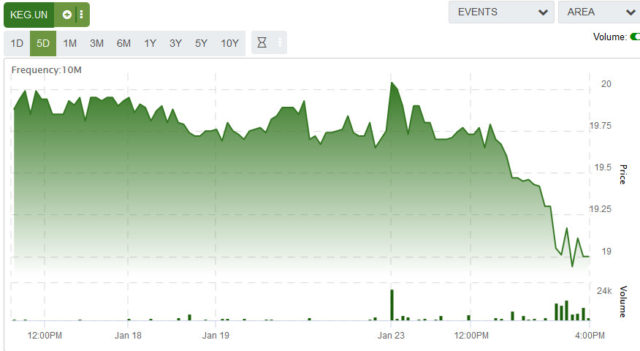Another ranting post with little direction.
With marijuana-related equities and cryptocurrencies plummeting, the market for speculative investments appears to be topping. Probably the next short squeeze that occurs will be the best time to be shorting these instruments. Implied volatility on the options sadly are high, and the borrow rate on WEED, APH, ACB, etc., are astronomical.
I also note Aimia (TSX: AIM) has sold off one of their divisions today and most of the negative news is buried in a later paragraph concerning the tightening of their senior credit facility – this is basically part of the slow march to zero. The company is happy to cite the amount of cash on their balance sheet, but not so happy to cite the balance of their deferred revenues, which represents future commitments that will be offset by cost of goods sold – hence the cash reserve. Using an insurance analogy, they are running off their insurance book with little capacity to collect premiums written after Aeroplan expires in 2020.
There’s a lot of young people out there that have witnessed nothing but rising markets and low interest rates and the financial mindset is fixated on these two conditions. There is going to be a lot of financial roadkill along the way, similar to what happened in 2000-2002 where a lot of people got wiped out for believing the dot-com bubble.
Incidentially, 2002-2003 was the perfect time to invest in the inevitable winners of that technology boom (Amazon and Priceline being two great examples). There will have to be winners out of blockchain software, but it could just as equally come from a major player. Very difficult to say at this point in time as I still have not seen any functional system operating with blockchain that doesn’t have a parallel system that is better – unless if you believe that cryptocurrency’s best application is evading monetary authorities.
As I suggested in my previous post, the roller-coaster is just starting. No point in jumping in too early.

